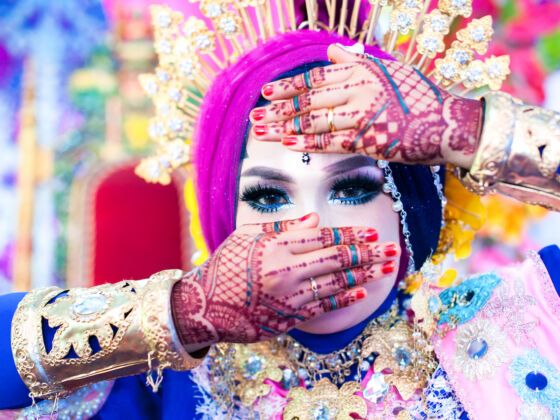Before Western colonisation of indigenous peoples or the introduction of social constructs, such as gender specified clothing, toys and behaviours, gender diversity was widely accepted and celebrated in many cultures around the world. However these introductions have shaped modern societies, and the idea of gender fluidity and expression has unfortunately been lost or suppressed, but there are some cultures that still honour these ancient traditions today.


Muxes, Mexico
Muxes are a third gender that exhibit both male and female qualities within indigenous communities of Mexico’s Oaxaca Peninsula. Muxes are one of the longest standing examples of indigenous gender diversity, tracing back to the intersex gods and deities of Aztec and Mayan iconography.
Although there are similarities to transgenderism, muxes wish to emulate femininity but do not necessarily identify as women. In fact it is the blend of both male and female characteristics that makes muxes so distinct. Ivan Olita’s short documentary above features modern muxes explaining the third gender in their own words:
“I myself represent duality of two things, because I have the strength of a male and the sensitivity of a female; in the Zapotec vocabulary Muxes means both feminine and fear…” “In Zapotec we use la-ave if we talk about people… this is our language there is no him or her”
Despite a prejudicial past muxes are now fully accepted in the region and play an important role in local communities.
Bugis society, Indonesia
Bugis society in Indonesia’s South Sulawesi actually recognises five genders. These consist of male and female; Calabai, biological males who embody female qualities and social roles; Calalai, biological females who take on a masculine identity; and Bissu, those who encompass all of these gender aspects.
Calabai live as heterosexual women, whilst Calalai live as heterosexual men, both taking on roles synonymous with their gender identity.
Bugis people who are bissu are referred to as gender transcendent, meaning they socially and even sometimes biologically encompass characteristics of all Bugis genders. Though not true of every several-gender culture, people who exhibit more than one gender, or indeed all gender types, are commonly appointed as shamans, priests or other spiritual figures. For instance, bissu act as spiritual advisors and bequest protection for those about to make the pilgrimage to Mecca.
Quariwarmi, Peru
Before the Spaniards conquered the Inca Empire an ancient third gender was recognised. Quariwarmi were androgynous shamans tasked with performing rituals in honour of the god chuqui chinchay, a dual gendered jaguar deity. These shamans were representations of the dual forces in Incan mythology; male/female, past/present, living/deceased.
However, these Incan beliefs toward gender were wrong in the eyes of the oppressive conquistadors and thus were persecuted. Unfortunately this is just one of many multiple-gender cultures that has been historically victimised.
Gender diversity is an integral part of human history and culture, and the more globally aware we are of non-binary gender communities the more acceptance there will be in the world, leading to kinder and more productive equal societies.
You can immerse yourself in these vibrant and beautiful cultures by volunteering on one of our Adventure Trails through Central America or South East Asia.
Text by Thomas Phillips
This article originally appeared on Frontier and is republished here with permission.